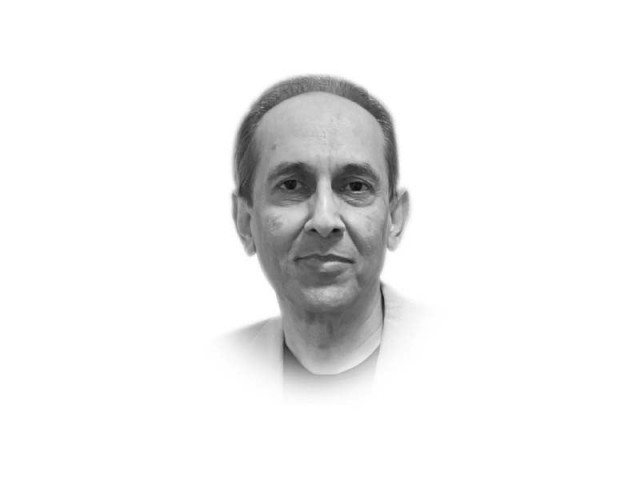Roe v Wade — a cocktail of questions
To abort or not to abort, who has the right to make this decision?

Out beyond ideas of evil and virtue, there is a field. I’ll meet you there.—Rumi
A moral dilemma poses a challenge for the mind. Is it alright to kill one person to save the lives of five people? Should death sentence be banned? Is it inhumane to pull the plug on a terminally ill patient who is in constant agony if he or she wants to commit suicide (euthanasia)? Is lying a moral wrong under any and all situations? (To keep things simple, we will not delve into Kant’s categorical imperative nor discuss the merits and demerits of utilitarian ethics).
Here’s another head-scratcher: should a woman be allowed to have an abortion? What if she does not wish to have a child? What if her health is at risk? What if she is only 14 years old and was raped?
Roe v Wade (1973) was a landmark decision by the United States Supreme Court that protected a pregnant woman’s right to have an abortion. On June 24, 2022, the court in a 6-3 verdict overturned the legal precedent it had set 49 years ago sending a tsunami of protests across the nation. The contentious judicial ruling signified, among other things, a shift in the partisan make-up of the bench (conservative v liberal). Justice Alito, in his majority decision, slammed Roe v Wade as “egregiously wrong”. The minority decision, on the other hand, offered a scathing criticism of the majority for abandoning the doctrine of stare decisis.
Let’s put politics on the back burner and address the moral conundrum. But first, we must recap embryology 101: gametes (egg and sperm) unite to form a zygote which develops into an embryo through repeated cell divisions. By the end of the first month, the embryo is smaller than a grain of rice. Embryo development continues until the end of the eighth week when external and internal structures have begun to form. The unborn is now called a fetus. At week twelve, it’s about 2 ½ inches or 60 millimeters.
Let’s answer the following questions with a Yes or No or Not Sure:
Is zygote anything more than just a fertilised egg? Is embryo a living thing? Can human gametes and zygotes be used for biomedical research? Is fetus a human? A future human? If a fetus is human, is viability (the ability of fetus to survive outside a mother’s womb) the cut-off point? Is there a difference between a human and a person? If a person is someone who has consciousness, intelligence and the moral right for self-determinations, then a fetus may not be considered a person nor may a comatose patient. These questions are especially pertinent if we believe, as we do, that killing an innocent person is morally wrong.
But wait a minute. Here is the crux of the problem: are our answers to these questions grounded in science or our religious and cultural perceptions, or are they intuitive or ontological?
To abort or not to abort, who has the right to make this decision? Despite the joy and promise it brings, pregnancy is an ordeal that is risky and distressing. Does it necessarily imply that a pregnant woman should have complete personal autonomy to make the decision? Is it like having your tooth extracted because it hurts so bad? In the case of two consenting adults, should it not be a matter of mutual consideration? But wait a minute, whatever happened to family planning and contraception? Whatever happened to maturity and responsibility?
What about a helpless pregnant woman in a small village who points to the patriarchal male-dominated culture like ours where a wife is forced into submission, where her primary job is to please her husband?
Prohibitive and punitive by design, Pakistan law, revised in 1990, allows abortion to save a woman’s life (at any stage of pregnancy) or to provide for “necessary treatment” so long as fetal organs are not completely developed (90-120 days of pregnancy). But Pakistan is a country of contradictions. It is a country where hope and disappointment collide at every corner. We have a low rate of contraception use and a high rate of abortion. Is abortion being used by women as contraception?
Ironically, our physicians are reluctant to perform abortions. Women are driven away to seek unsafe backstreet abortions. According to The Guardian (2017), an estimated 623,000 Pakistani women were treated for complications resulting from induced abortions. Is it up to the NGOs to educate us on abortions and contraceptives? Is it their sole responsibility to provide for funding for family planning and women’s reproductive health?
Our government must play the lead role in reducing the number of unintended pregnancies by introducing pregnancy prevention programmes that include family planning and making contraceptives available to low income families. It’s time to have a public discourse on the subject.
We have a bourgeoning desire to put our house in order. Let’s start with asking the right questions. Let’s start by treating women with fairness and equality they deserve.
“No nation can ever be worthy of its existence that cannot take its women along with the men. No struggle can ever succeed without women participating side by side with men.” —Muhammad Ali Jinnah.
Published in The Express Tribune, July 8th, 2022.
Like Opinion & Editorial on Facebook, follow @ETOpEd on Twitter to receive all updates on all our daily pieces.















COMMENTS
Comments are moderated and generally will be posted if they are on-topic and not abusive.
For more information, please see our Comments FAQ